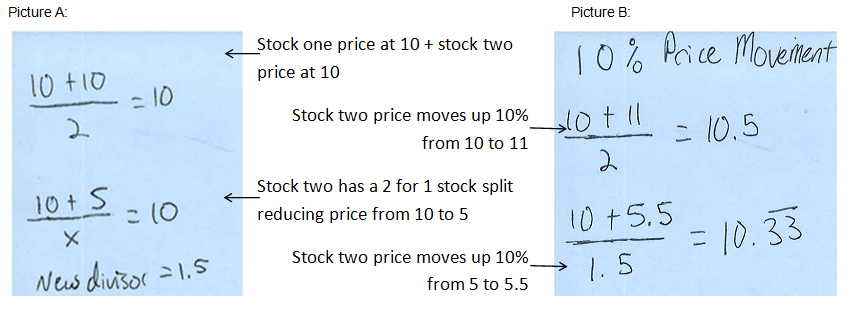The Dow is Fake News
On March 1, the Dow Jones Industrial Average broke through the 21,000 barrier to close at a record high. And that’s after closing above 20,000 for the first time ever in January.1 In mid-February, the Dow, S&P 500 and Nasdaq each closed at record highs for three days in a row.2 During that stretch, the S&P 500 topped $20 trillion in market value and would later break briefly above 2,400 for the first time.3
These milestones received a lot of attention from the financial media, and the performance of these popular indexes is constantly reported, whether on TV, on the radio or in the newspaper. When it’s hard to tell what’s real and what fake news is, I’d like to point out a fake one since it just takes arithmetic to prove it.
The Dow was introduced in 1896 and represented 12 stocks; it now represents 30 stocks. It is calculated by adding the price of each of those companies and dividing them by the Dow divisor. In 1896 the Dow divisor was 12 to represent each of the companies in the index and therefore give an “average” price. One of the problems that comes into play is when one or multiple of the companies in the index have a stock split. For an example, a 2 for 1 stock split would be the company doubling the number of shares and therefore the price dropping in half. It’s like going to the bank with a $10 bill and exchanging it for two $5 bills. For a price weighted index like the Dow this means a new divisor needs to be calculated. I explain a simplified version of how to calculate this below.
In picture A is my fictitious price weighted index with two stocks both at a price of 10 dollars. I then show how to calculate a new divisor if there is a 2 for 1 stock split causing the second stock’s price to be reduced from 10 to 5. Before the stock split the divisor is 2 to take a simple average creating the index value of 10; after the stock split one must solve for a new divisor with the new stock price so that the index holds the same value. This is because two $5 bills are still worth $10 there’s just more bills and in a price weighted index it doesn’t account for the number of bills. In picture B, I show how this creates a problem. If a stock moves up in price by 10% (due to market movements) then in both before and after a stock split you would think the index would represent the same value. In a price weighted index however, it doesn’t, as shown in picture B.
The Dow divisor as of April 11th 2017 is 0.14602128057775. There’s been a few stock splits and spin offs since 1896. Additionally, since the Dow divisor value is below one, instead of acting as an average of the prices it now actually acts as a multiplier of the prices.
For more info on index methodology go to http://us.spindices.com/documents/methodologies/methodology-index-math.pdf
In summary, the Dow is fake news. While a price weighted index like the Dow Jones Industrial Average will move up and down with the 30 stocks it represents, the degree to which it moves is not accurately representing those movements. The Nasdaq and S&P 500 are both market capitalization weighted indexes and those, mathematically, are reliable for their purpose. However, the Nasdaq composite index only represents a bit over 3,000 U.S. technology stocks and the S&P 500 only represents 500 of the largest U.S. stocks.
Having a portfolio that performs differently from these indexes is a good thing because it means you’re diversified. You want a portfolio that holds many types of investments, asset classes, industry sectors and geographic areas. And that’s not something indexes do well.
1 MarketWatch: Dow Clambers Above 20,000 – Marks 2nd-Fastest Run to a Milestone in History 2 TheStreet: Dow, S&P 500 and Nasdaq Score New Records for Third Straight Day 3 CNBC: Dow Closes Above 21,000 as Stocks Post Best Day of 2017 After Trump’s Speech


